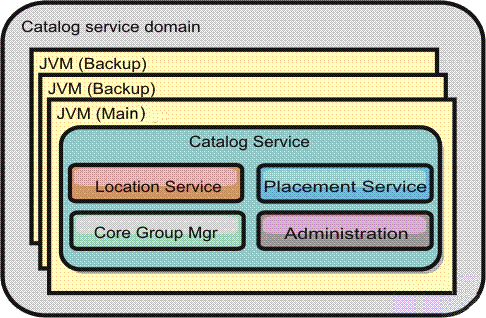High availability catalog service
A catalog service domain is the data grid of catalog servers you are using, which retain topology information for all of the container servers in your eXtreme Scale environment. The catalog service controls balancing and routing for all clients.
For more information about catalog servers, see Catalog service.

When multiple catalog servers start, one of the servers is elected as the primary catalog server that accepts heartbeats and handles system data changes in response to any catalog service or container changes.
Configure at least three catalog servers in the catalog service domain. If your configuration has zones, you can configure one catalog server per zone.
When a container server contacts one of the catalog servers, the routing table for the catalog service domain is also propagated to the catalog server and container server through the CORBA service context. Furthermore, if the contacted catalog server is not currently the primary catalog server, the request is automatically rerouted to the current primary catalog server and the routing table for the catalog server is updated.
Catalog service domain heart-beating
The catalog service domain looks like a private core group with a static membership and a quorum mechanism. It detects failures the same way as a normal core group. However, the behavior is modified to include quorum logic. The catalog service also uses a less aggressive heart-beating configuration.